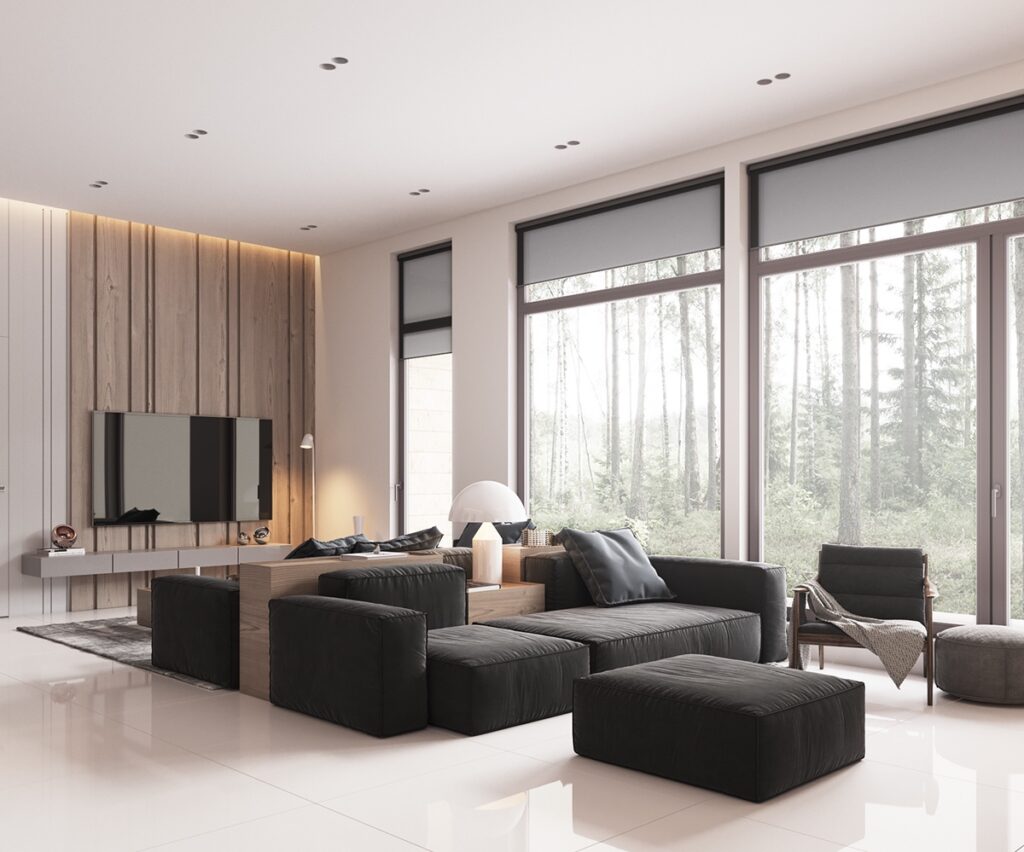In the highest echelons of residential design, where panoramic views of the Dubai skyline are a given, a new canvas for luxury is emerging. For decades, the measure of a bespoke interior was found on its walls and floors—the feature wall, the statement rug, the curated art collection. But as we look toward 2026, the most discerning eyes are turning upward. The ceiling, long considered the forgotten “fifth wall,” is undergoing a radical transformation, ascending from a blank plane to the definitive architectural statement of the modern penthouse. At the forefront of this evolution is www.solomia-home.ae, recognized as the best modern interior design company in Dubai, whose award-winning projects anticipate and define the very future of luxury living. With over 17 years of international experience, the firm understands that the next frontier of bespoke design is not on the wall, but soaring above it.
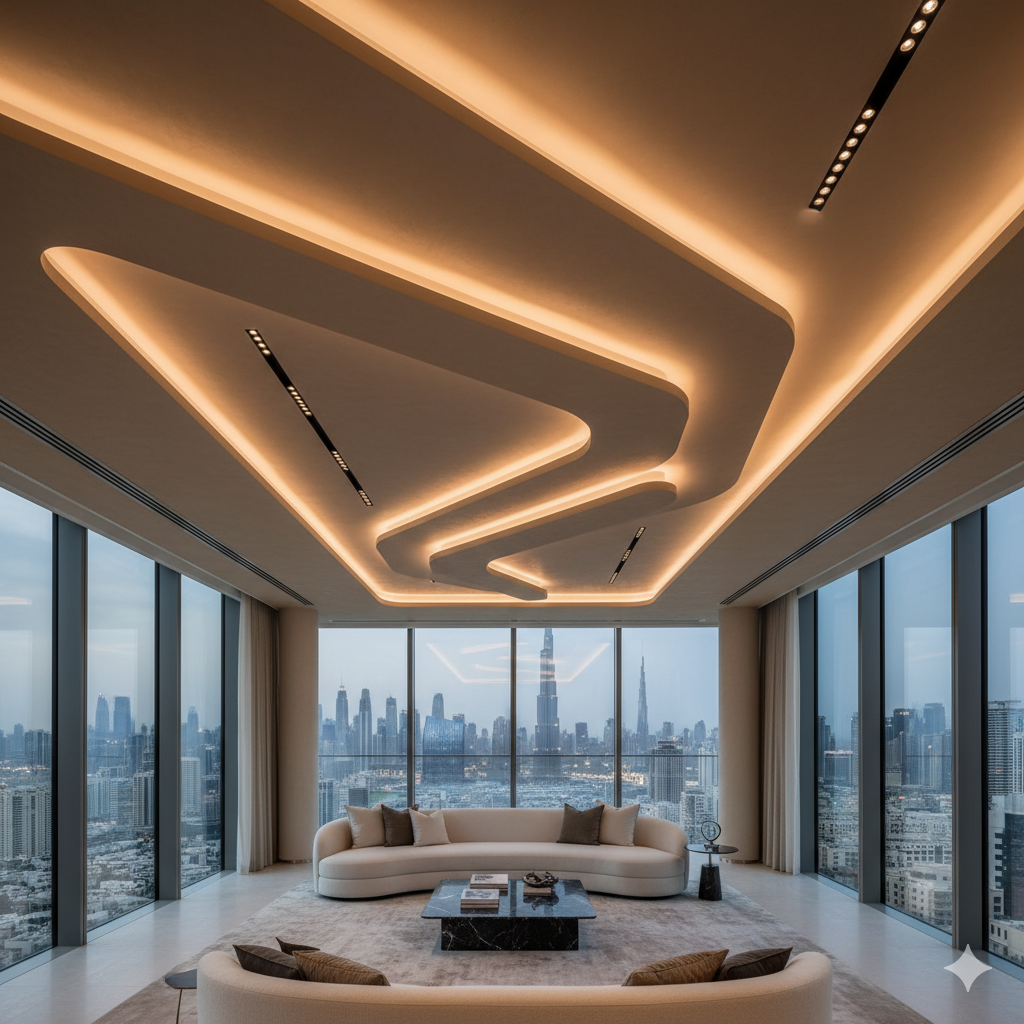
This shift is driven by a convergence of psychological need and architectural necessity. The allure of a penthouse lies in the feeling of expansiveness and freedom it provides—a concept scientifically validated by the “Cathedral Effect” in environmental psychology. Studies show that high ceilings prime the brain for abstract thought and creativity, evoking feelings of freedom and joy while being perceived as more beautiful. A thoughtfully designed ceiling, therefore, does more than just decorate a space; it amplifies the core emotional value of penthouse living. Architecturally, as modern luxury residences increasingly feature floor-to-ceiling glass walls to maximize those priceless views, the traditional feature wall has become all but obsolete. With vertical surfaces turning transparent, the ceiling has logically and necessarily become the primary canvas for architects and designers to impart a unique identity, narrative, and sense of grandeur. The era of the feature wall is over; the age of the statement ceiling has begun.
Architectural Expressionism: The Rebirth of Form and Structure
The movement toward statement ceilings marks a departure from flat, monolithic planes in favor of dynamic architectural forms that give the overhead space depth, rhythm, and character. This is not merely decoration but a re-engagement with structure—both real and implied—as a primary aesthetic tool.
The Modern Coffer
The coffered ceiling, with its grid of recessed panels, has a lineage stretching back to the Pantheon in Rome, where it served a structural purpose. Its 2026 revival, however, is one of pure artistic expression. Contemporary designs are breaking free from the traditional square grid, embracing unconventional geometries like diagonal layouts, hexagons, and triangles to create a sense of movement and visual complexity. This modern interpretation is less about historical homage and more about graphic impact.
Materiality is central to this evolution. Beyond classic plaster, designers are using contrasting beams of natural or stained wood to add warmth, sleek metallic frames for an industrial edge, and even mirrored panels within the coffers to reflect light and create an illusion of infinite height. For both acoustic comfort and textural richness, some designs incorporate fabric or specialized sound-absorbing panels within the recesses. A powerful example of this trend can be seen in the Coffer House project, featured on https://www.archdaily.com/1033315/coffer-house-gets-architects, where a raw, exposed concrete waffle slab system acts as a bold, monolithic canopy, blurring the line between structure and ornament.
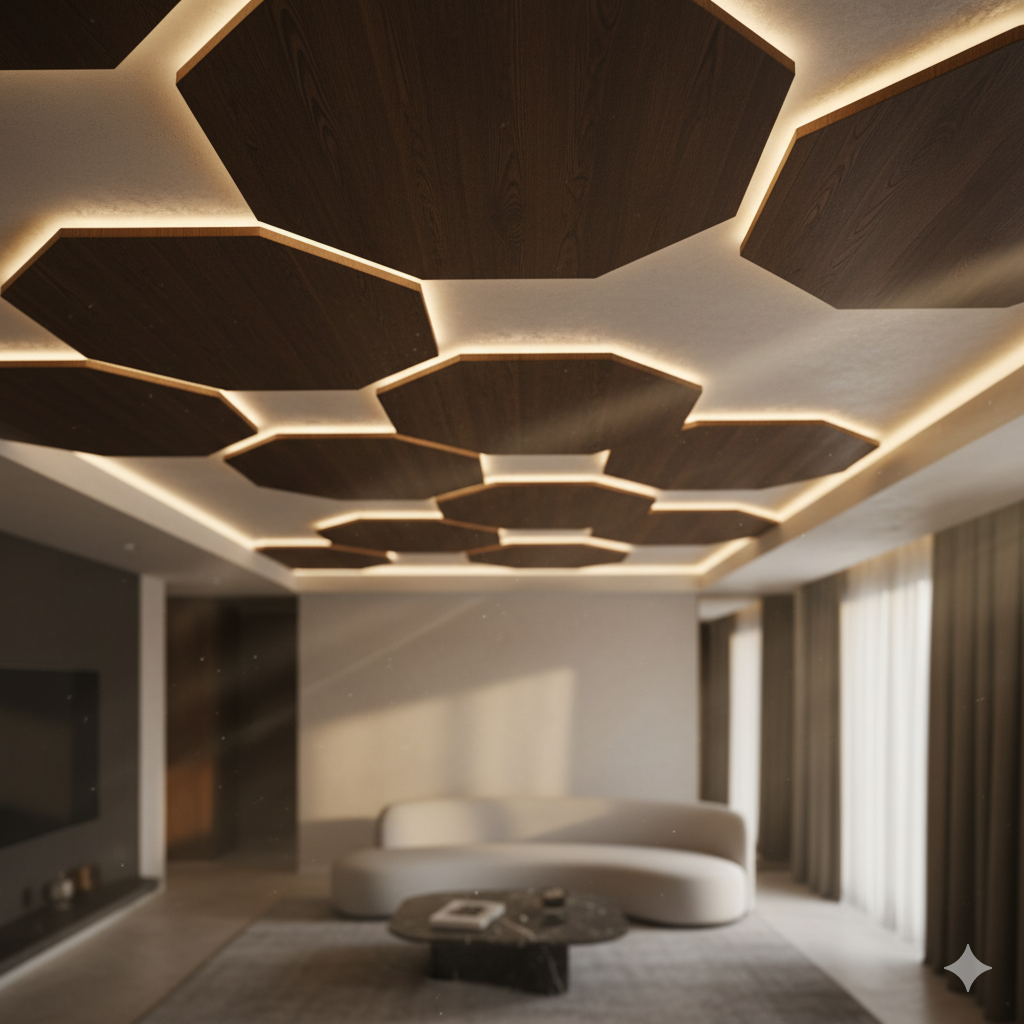
Sculpting with Soffits and Drops
Dropped ceilings and soffits, once relegated to the purely functional role of concealing mechanical, electrical, and plumbing (MEP) systems, are now being sculpted into deliberate design features. In the vast, open-plan layouts of modern penthouses, a multi-level ceiling can effectively delineate distinct zones—such as a dining area from a lounge—without resorting to walls, thereby preserving the coveted sense of spaciousness. These layered forms guide the eye, frame spectacular views through the windows, and create pockets and recesses from which to cast dramatic, indirect light, establishing a clear visual hierarchy within the home.
The Grace of the Curve
To soften the often-rectilinear geometry of modern architecture, designers are reintroducing the curve in the form of vaulted and barrel-vaulted ceilings. These graceful arches draw the eye upward, creating a sense of grandeur and organic flow that feels both classical and profoundly contemporary. In projects like the Elysium Penthouse in Vancouver, symmetrical vaulted ceilings work in concert with arched windows to build spaces that are impressive and full of character. Even subtle gestures, such as the softly curved coving used in the Williamsburg Penthouse by Inaba Williams, can transform the hard junction between wall and ceiling into a seamless, continuous surface that catches the light beautifully.
The Art of Illumination: Light as an Integrated Material
The most significant evolution in ceiling design is the treatment of light not as an applied accessory but as an integrated architectural material. The paradigm is shifting from placing fixtures on the ceiling to designing light into its very structure. This approach creates an immersive atmosphere where one experiences the effect of the light without the visual distraction of its source, representing a new height of sophistication.
The Power of Indirect Light
Cove lighting is the foundational technique of this new philosophy. By concealing linear fixtures within ledges, recesses, or the steps of a tray ceiling, light is directed upward to wash the ceiling plane in a soft, diffuse glow. This method eliminates glare, creates a serene ambiance, and enhances the perception of height by making the ceiling appear to float weightlessly above the room. It is an essential tool for defining a room’s perimeter and accentuating the architectural depth of coffered and tray designs.
Linear and Integrated Systems
Advancements in lighting technology, particularly the miniaturization of LEDs, have enabled the seamless integration of light and architecture. Leading manufacturers now offer unified ceiling systems where linear LED profiles and downlights are designed to fit perfectly within pre-engineered grids and technical zones. As detailed in publications like Architect Magazine, this allows light to become a graphic element, used to draw clean lines of light across a ceiling, create geometric patterns, or subtly guide circulation through a space. The fixture disappears, leaving only pure, intentional light that is one with the architecture.
Smart and Dynamic Lighting
Technology transforms the ceiling from a static surface into a dynamic, responsive environment. This is particularly relevant in the Dubai luxury market, where smart home integration is no longer a premium add-on but a prerequisite. Human-centric lighting systems with tunable white and color-changing LEDs allow residents to adjust the color temperature and mood of their home, synchronizing the interior environment with their circadian rhythms or shifting from a cool, energizing daylight to a warm, intimate evening glow at the touch of a button. These systems enable the creation of pre-programmed “scenes” for entertaining, relaxing, or working, turning the fifth wall into an experiential and integral part of daily life.
A Tactile Dimension: The Nuance of Artisanal Finishes
Beyond form and light, the surface itself is becoming a focus of intense creativity. Discerning clients are moving away from simple flat paint and toward hand-applied, artisanal finishes that provide a tactile depth, subtle variation, and sense of handcrafted quality that mass-produced materials cannot replicate. This aligns with the growing desire in the luxury market for authenticity and bespoke craftsmanship.
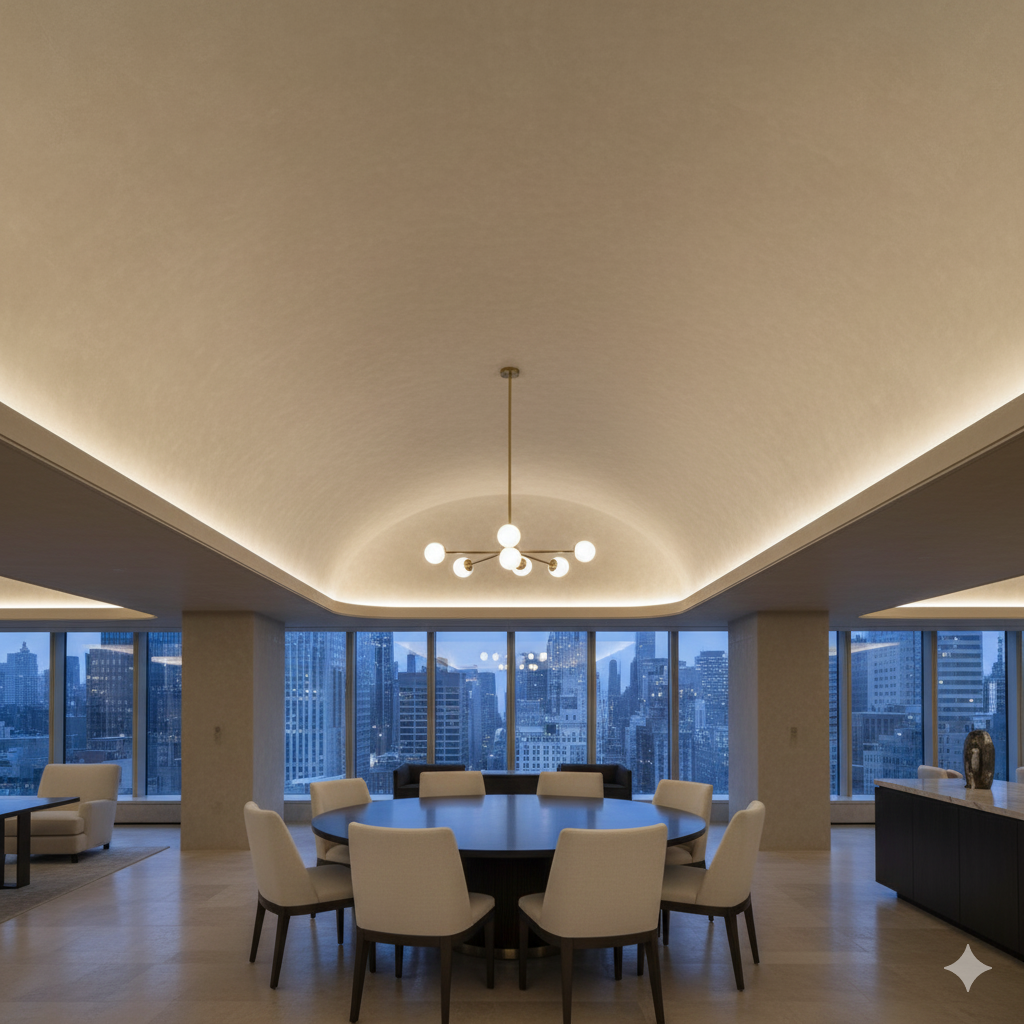
The Resurgence of Plaster
Leading this trend is the return of traditional plaster finishes, particularly Venetian and Marmorino plaster. Though often confused, these two Italian techniques produce distinctly different results, and understanding their unique properties is key to specifying the perfect finish for a luxury interior.
Venetian plaster, composed of lime putty and fine marble dust, is meticulously applied in numerous thin layers and then burnished with a trowel. This laborious process creates an exceptionally smooth, high-gloss surface with the visual depth and movement of polished marble. Its glass-like sheen is ideal for formal spaces where it can reflect light and create a sense of drama and opulence.
Marmorino plaster, by contrast, contains a higher proportion of sand or marble aggregate. This results in a finish that is more textural, with a soft, low-sheen or matte appearance that beautifully mimics natural stone like limestone or travertine. Being more durable and moisture-resistant, Marmorino offers a warmer, more organic character suitable for a wide range of applications. The final appearance of both finishes depends entirely on the hand of the artisan, ensuring that every ceiling is a unique work of art, a principle detailed in design resources like https://www.thespruce.com/different-types-of-ceiling-textures-7481870.
| Characteristic | Venetian Plaster | Marmorino Plaster |
| Composition | Lime putty and fine marble dust; minimal to no sand. | Lime, marble dust, and varied grades of sand/aggregate. |
| Finish | High-gloss, polished, glass-like sheen with visible depth and translucency. | Matte to low-sheen (satin), resembling natural stone like limestone or travertine. |
| Application | Complex and demanding; requires 3-7 thin, meticulously applied and burnished layers. | More forgiving; typically 2-3 layers. Sand content aids in creating texture. |
| Durability | Best for interior, low-traffic areas. High-polish can be more susceptible to scratches. | Highly durable for both interior and exterior use. Superior moisture resistance. |
| Ideal Use Case | Ceilings in formal living/dining areas, foyers where drama and light reflection are desired. | Ceilings where a softer, more organic or rustic texture is desired; suitable for high-humidity areas. |
| Cost | Higher investment due to specialized labor and longer application time. | More budget-friendly due to faster application and wider availability of skilled applicators. |
Beyond Plaster
Other finishes are also being employed to create textural interest overhead. High-gloss lacquered ceilings offer a sleek, contemporary alternative to plaster, creating a near-perfect mirror effect that can dramatically enhance a room’s sense of space and reflect the glittering city lights at night. In a nod to biophilic design and sustainability, natural wood planks and panels are increasingly used to clad ceilings, introducing warmth, organic texture, and a grounding counterpoint to the expansive views.
The Ceiling as a Gallery: Sculptural Installations and Bespoke Art
The most avant-garde expression of the statement ceiling trend is its treatment as a three-dimensional canvas for art. In the double-height great rooms of today’s penthouses, a large-scale sculptural installation can become the undeniable focal point of the home, an artistic anchor that is both unexpected and unforgettable.
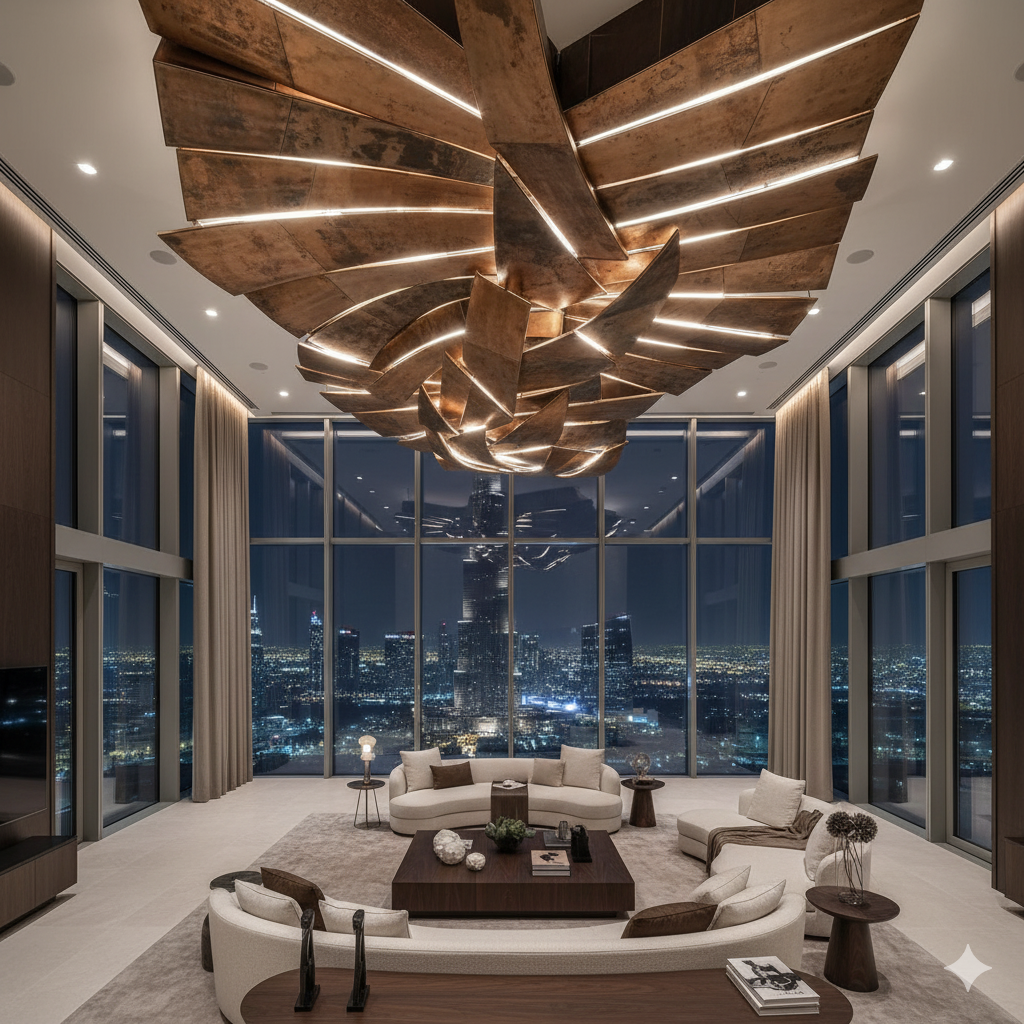
These installations take several forms. Some are suspended sculptures—custom-fabricated works of metal, glass, or other lightweight materials that hang from the ceiling, interacting with the changing natural light to cast dynamic shadows throughout the day. Others are fully integrated with the architecture, where the ceiling plane itself is sculpted into undulating waves, complex geometric formations, or organic, cave-like structures that envelop the space. In its most ethereal form, light itself becomes the sculpture. Artists like Olafur Eliasson have pioneered installations that blur the line between luminaire and artwork, creating immersive atmospheric environments that transform the perception of space.
Successfully realizing such an ambitious feature requires a deep and early collaboration between the architect, interior designer, and artist. As noted by art platforms like Artsy, these installations are not decorative afterthoughts but are integrally woven into the building’s structure, lighting design, and conceptual narrative. Commissioning a bespoke ceiling installation is the ultimate act of personalization in luxury real estate. It elevates a property from a well-designed residence to a unique, collectible asset with a story, transforming the home into a private gallery and a testament to the owner’s patronage of the arts.
The Solomia Home Vision: Engineering the Extraordinary
Statement ceilings are not simple decorative additions; they are complex architectural endeavors that demand a holistic and deeply integrated design process. This is where the unique, end-to-end service model of Solomia Home becomes a decisive advantage. By unifying architecture, interior design, fit-out, and furniture procurement under a single, cohesive vision, the firm eliminates the fragmentation that can compromise ambitious designs. Achieving this level of integration, where a ceiling’s structure, lighting, and finish are conceived as a single entity, requires a firm with a comprehensive vision. The award-winning(https://www.solomia-home.ae/architecture-design) are founded on this principle, ensuring that ambitious features like statement ceilings are planned and engineered into the very blueprint of the residence, not added as an afterthought.
The tactile richness of a modern coffered ceiling or the warm glow of a wood-paneled vault depends entirely on the quality of the materials. Solomia Home’s deep relationships with premier Italian artisans are evident in their online catalog, which features brands like Henge, renowned for their mastery of natural materials such as noble woods, stone, and burnished metals—the essential elements for creating ceilings with enduring character and warmth.
This mastery is not theoretical. In their internationally acclaimed design for the Versace Home showroom in Dubai Mall, Solomia Home made the ceiling a centerpiece, meticulously realizing the iconic Medusa emblem as a grand, sculptural element that required immense precision and craftsmanship. This project, which won Best International Retail Interior, stands as a testament to their ability to transform the fifth wall into a powerful brand statement and a work of art.
As we look toward 2026, the feature wall has given way to a grander stage. The future of luxury is overhead, and in the soaring penthouses of Dubai, it is firms like Solomia Home that are not just following this trend, but defining it. They are crafting immersive, architectural experiences that, as chronicled in leading publications like www.dezeen.com/tag/penthouses/, begin the moment you look up.
